Abstract
1. The ability of cats to distinguish colours was investigated at mesopic and photopic levels to test the hypothesis that cats discriminate wavelength by using rods in conjunction with a single type of cone.
2. Cats were trained to distinguish red from cyan, and orange from cyan at the mesopic level. They retained the ability to make this discrimination when the coloured stimuli were placed against a background bright enough to saturate the rods.
3. One cat was also tested after being exposed to a bright white light of 9000 cd/m2 for a period of 5 min, and found able to distinguish red from cyan.
4. These results suggest that cats have more than one type of cone. Subsequent recordings from single units in the lateral geniculate nucleus showed that there are rare opponent colour units in layer B with input from a green-absorbing cone and a blue-absorbing cone.
Full text
PDF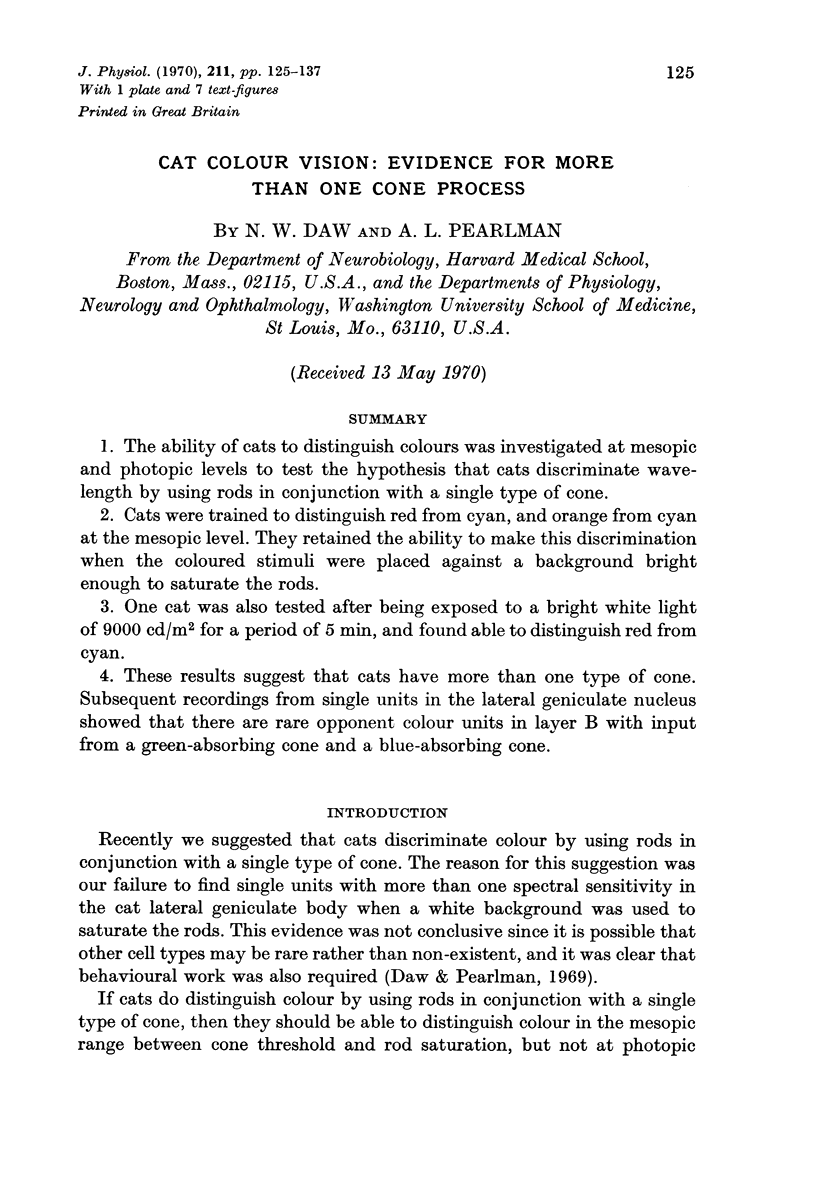
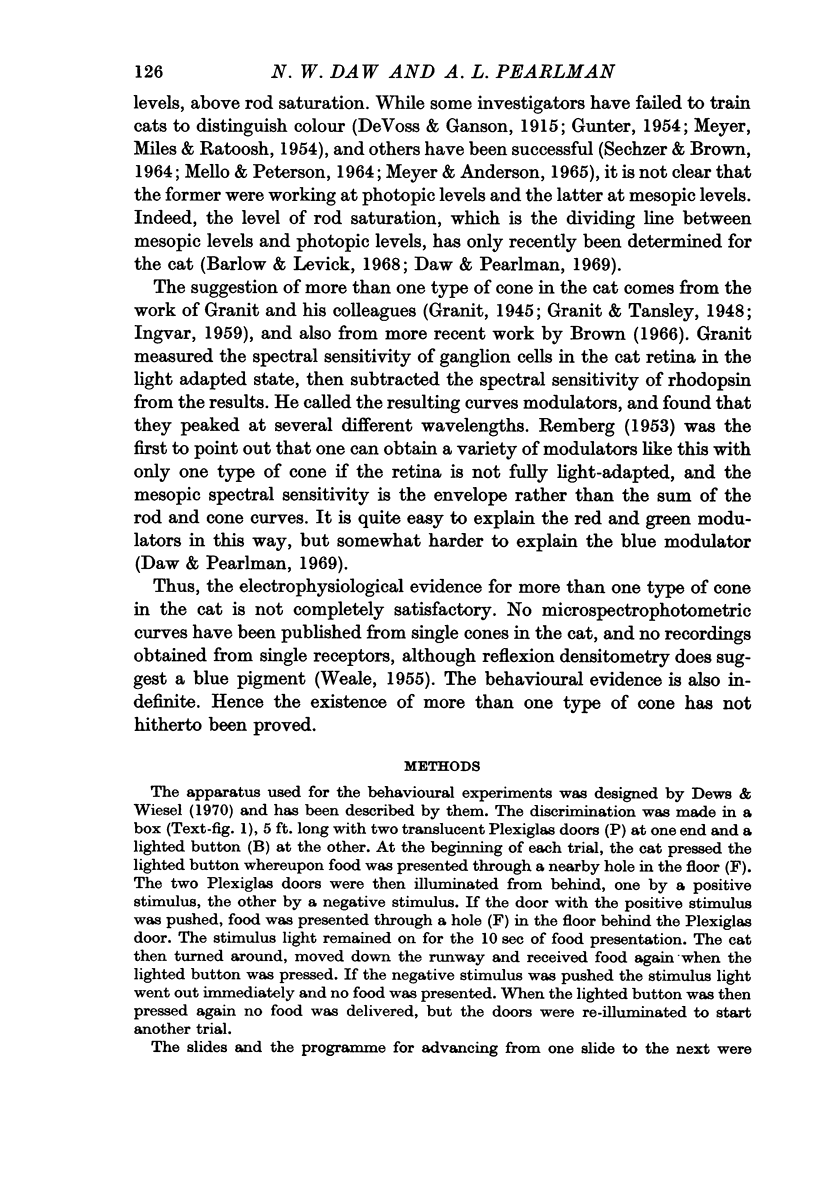
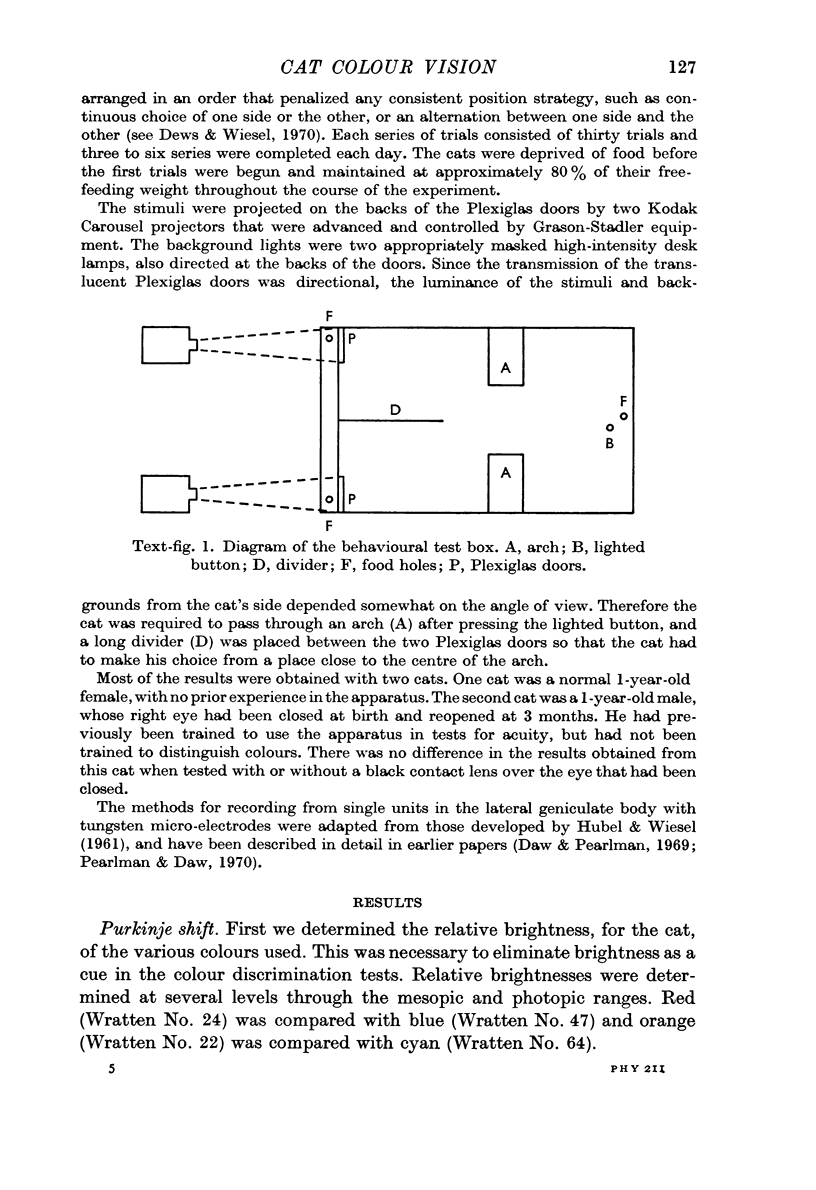
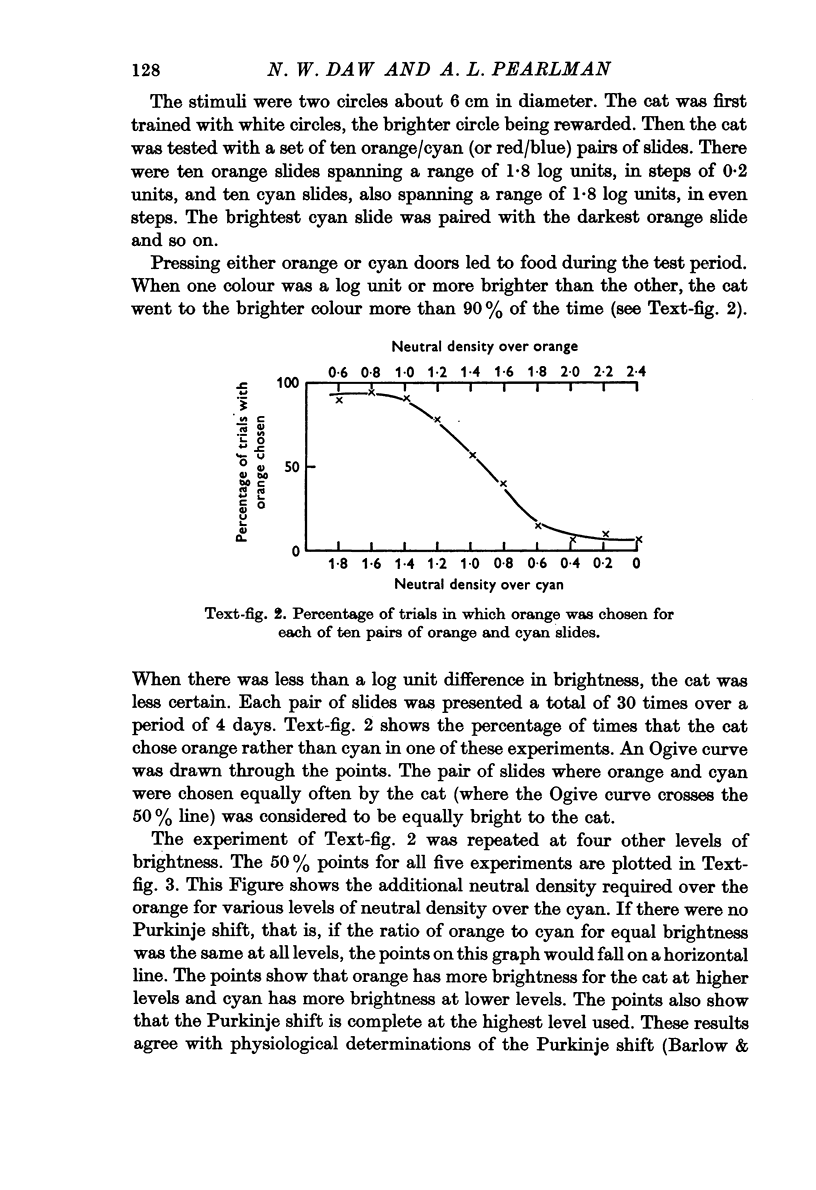
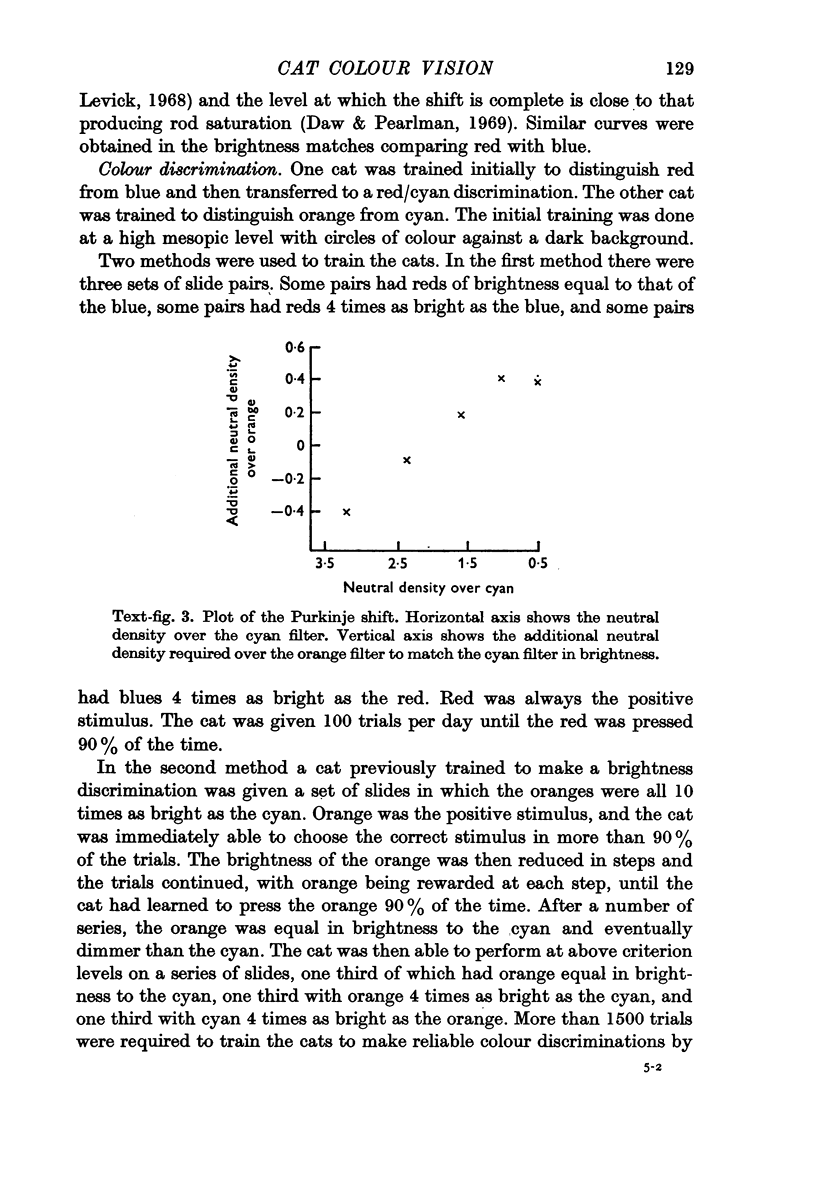
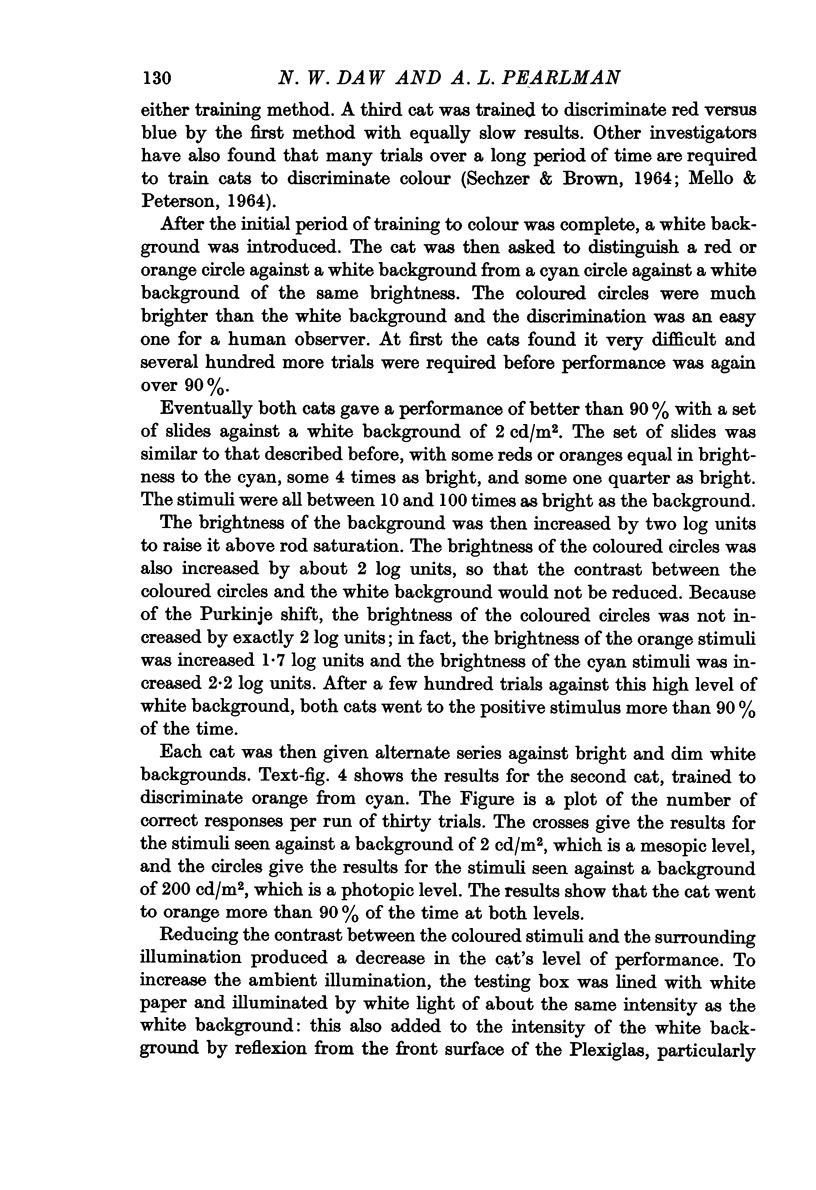
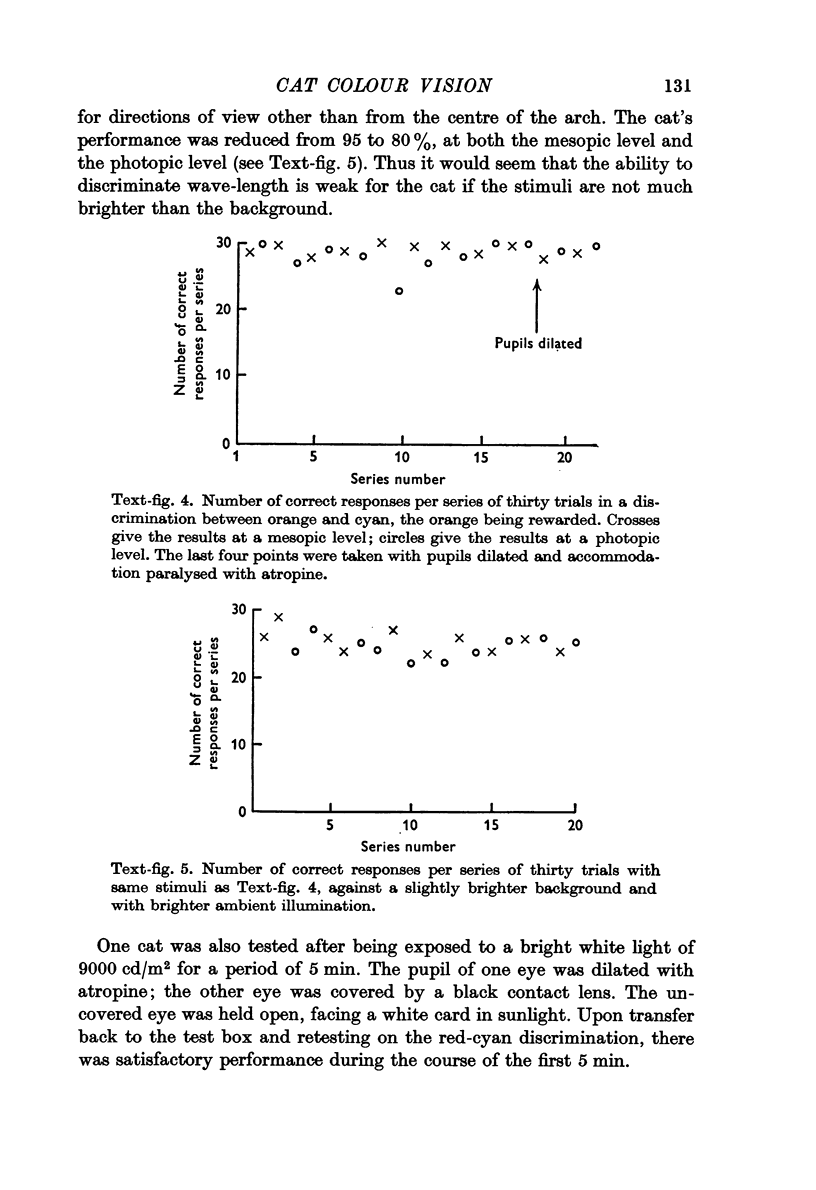
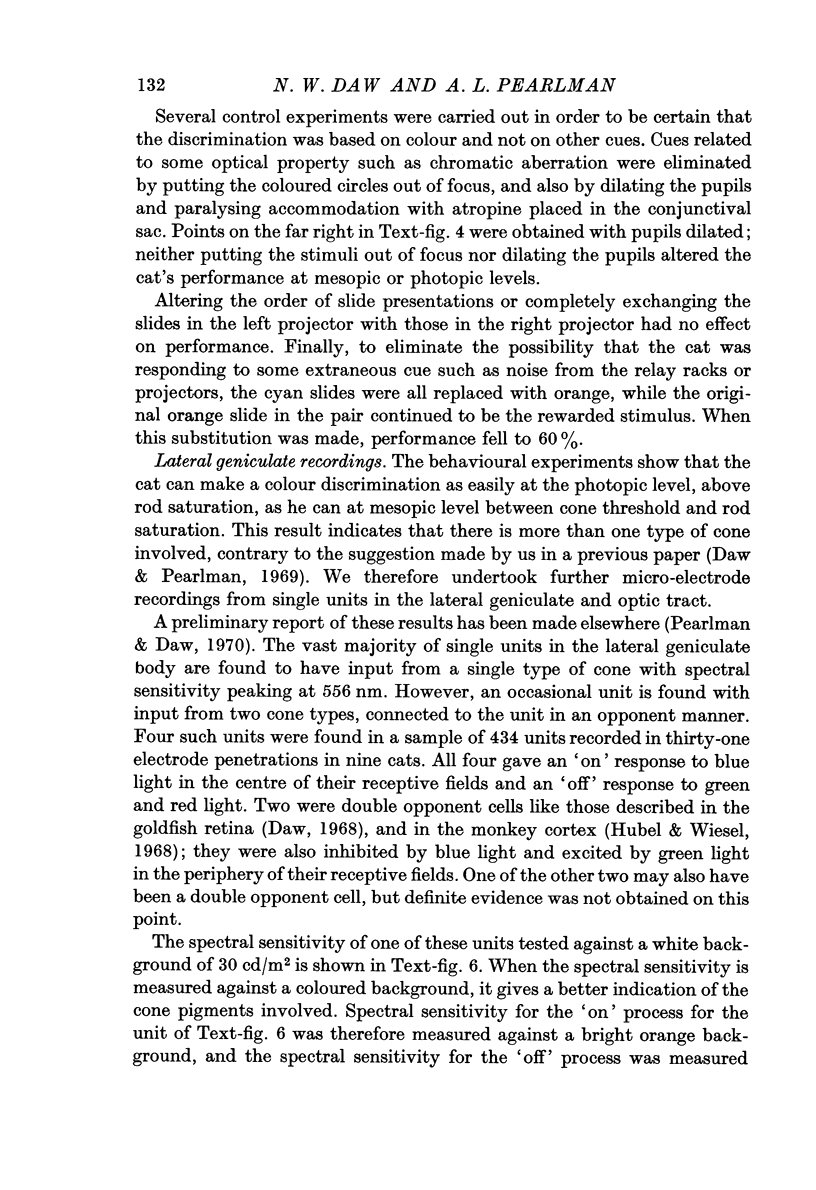
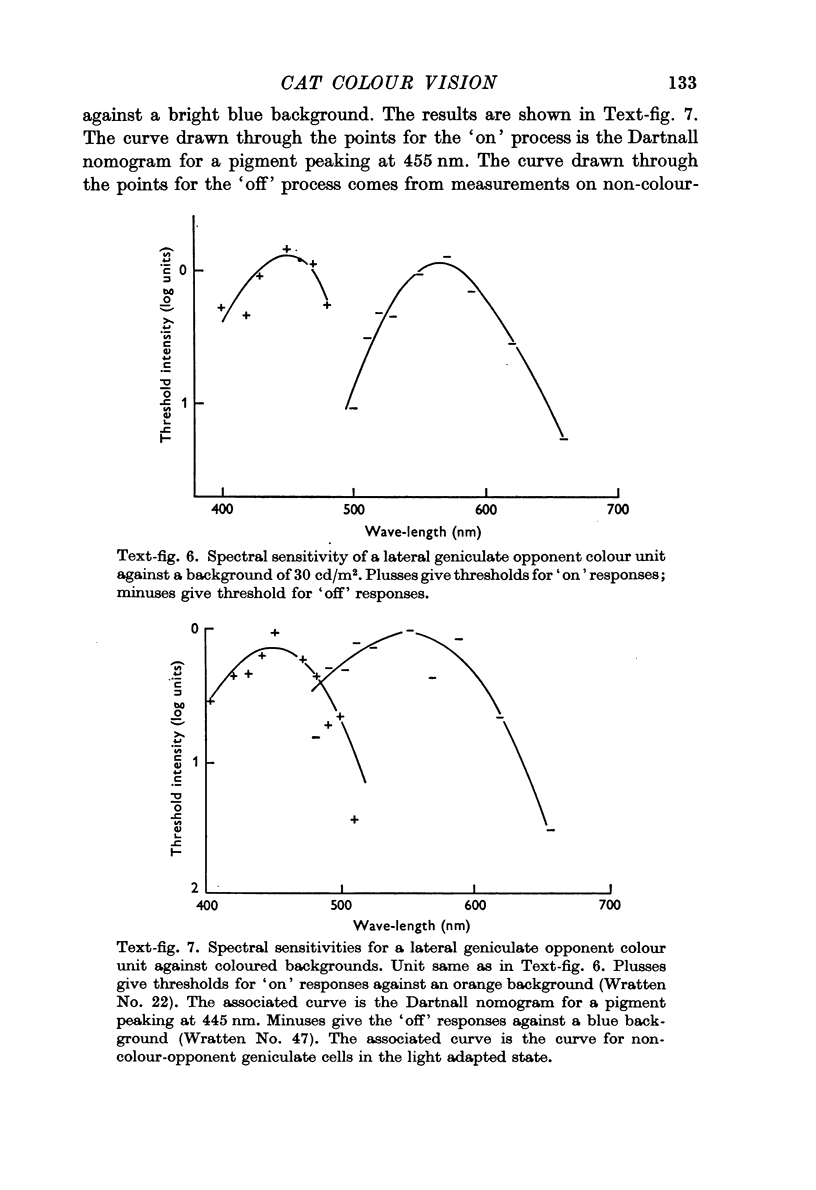
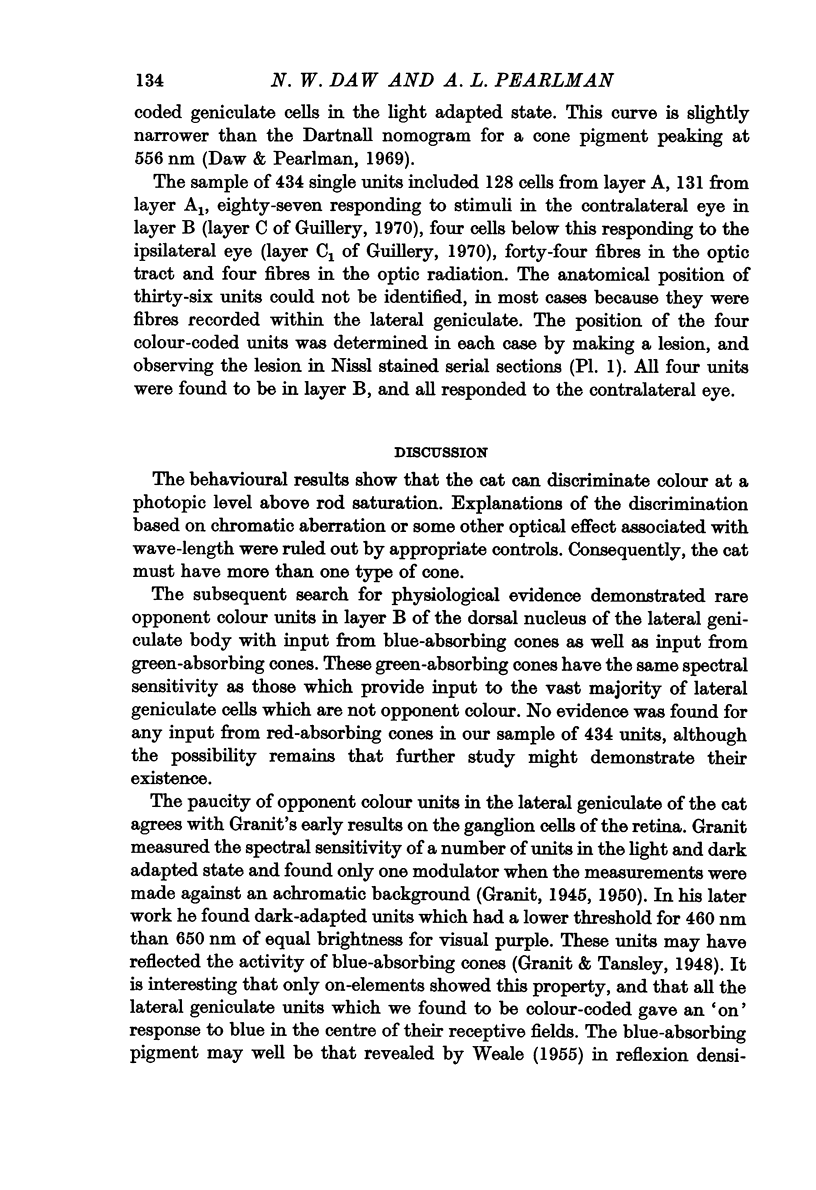
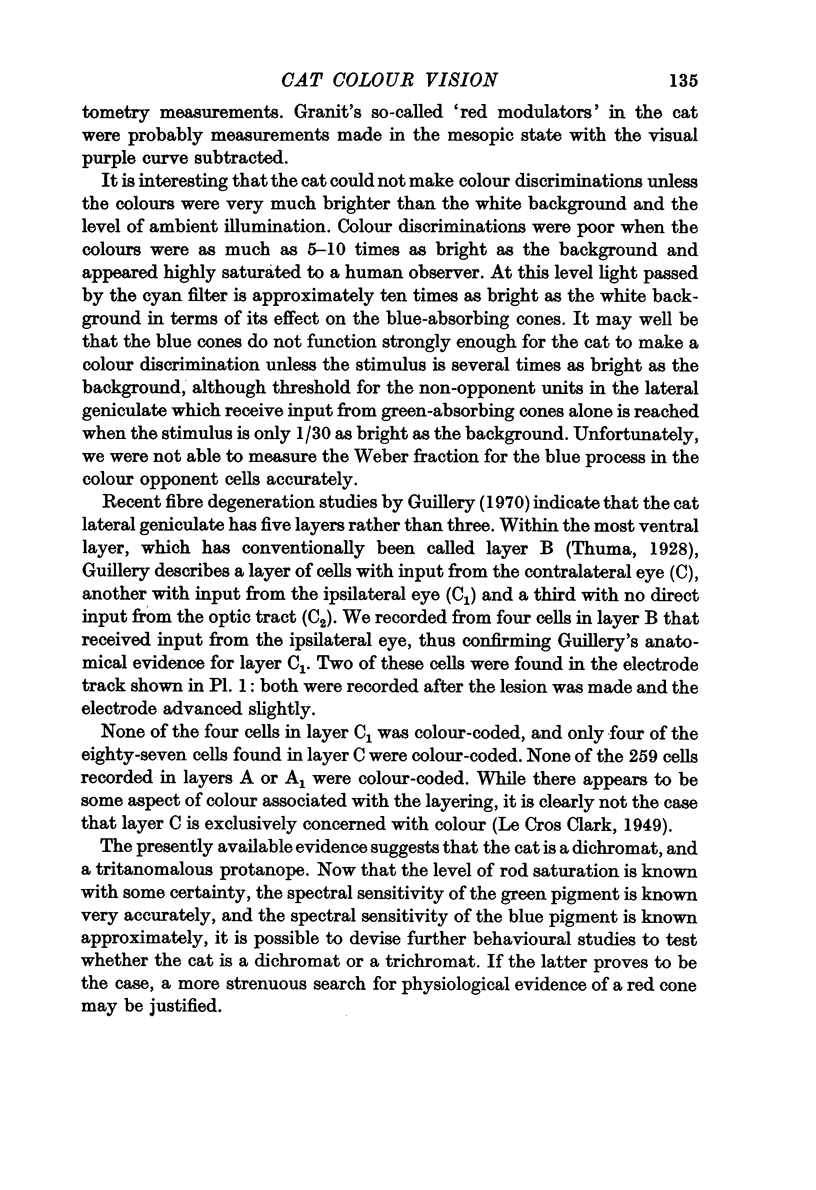
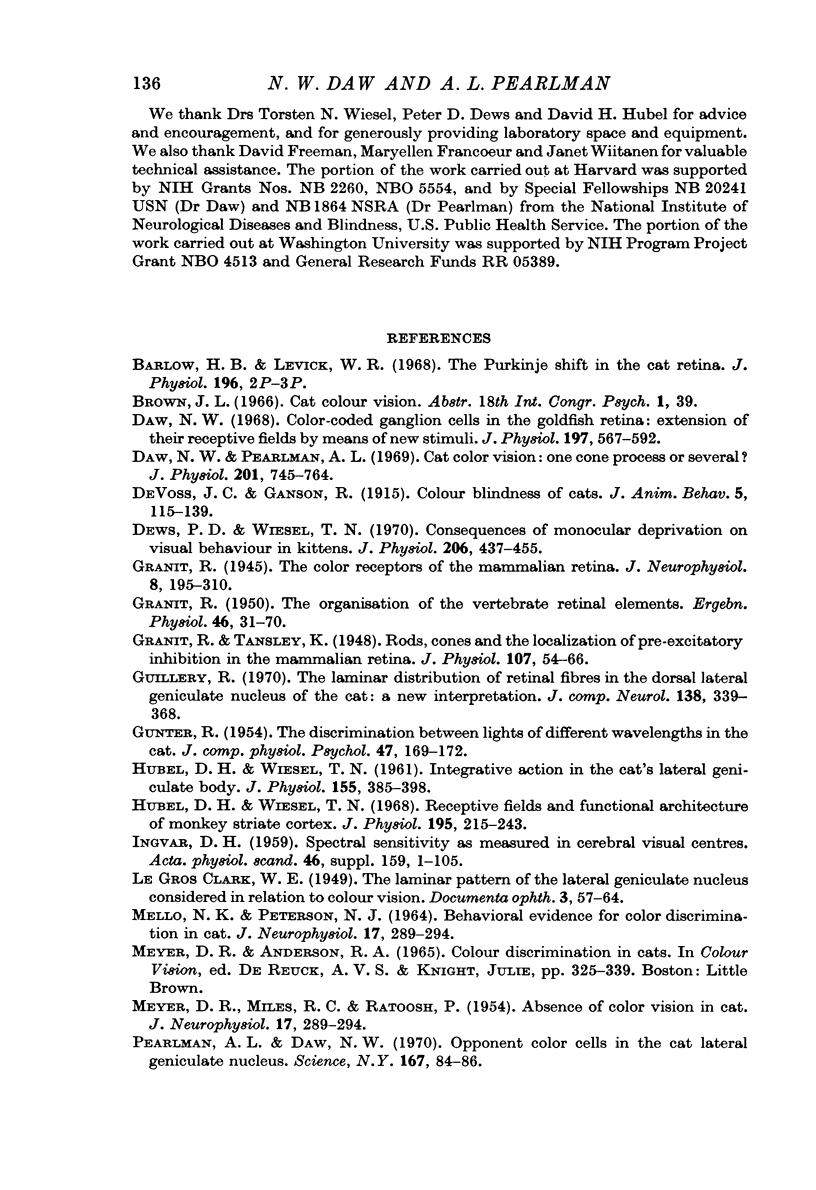
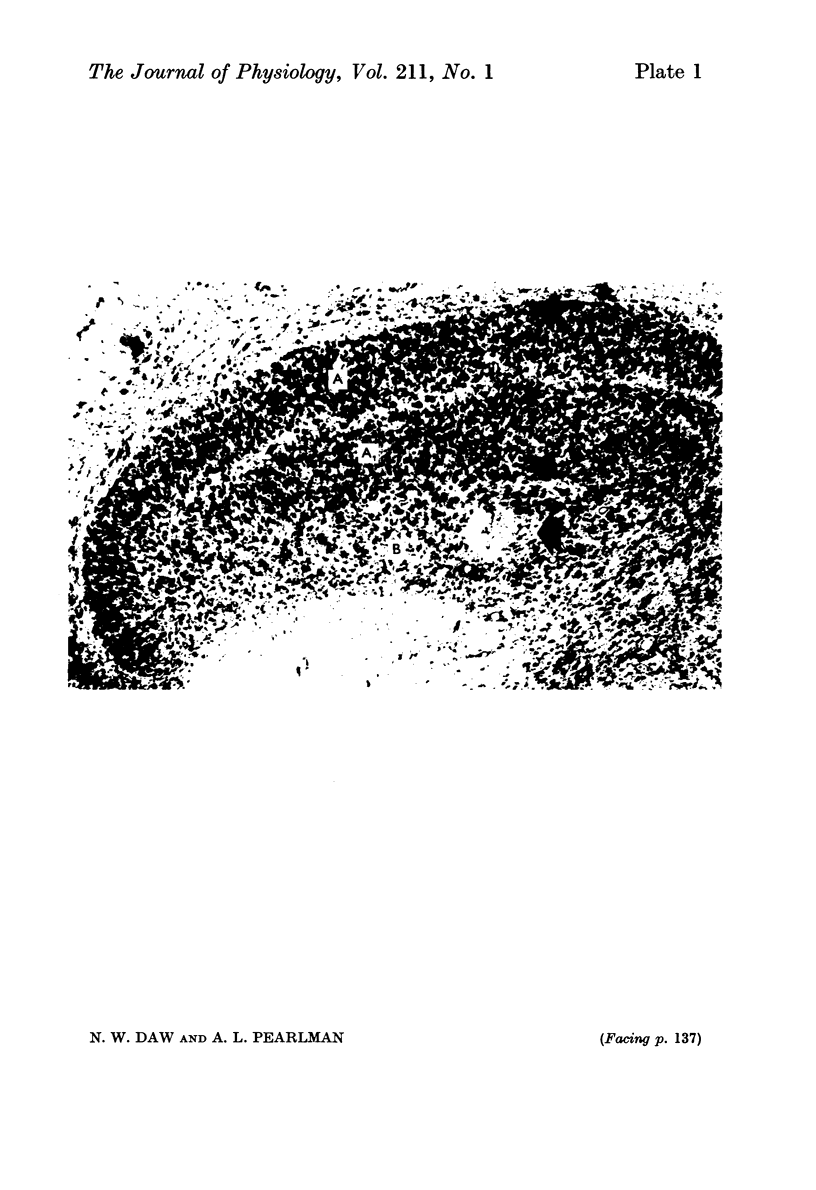
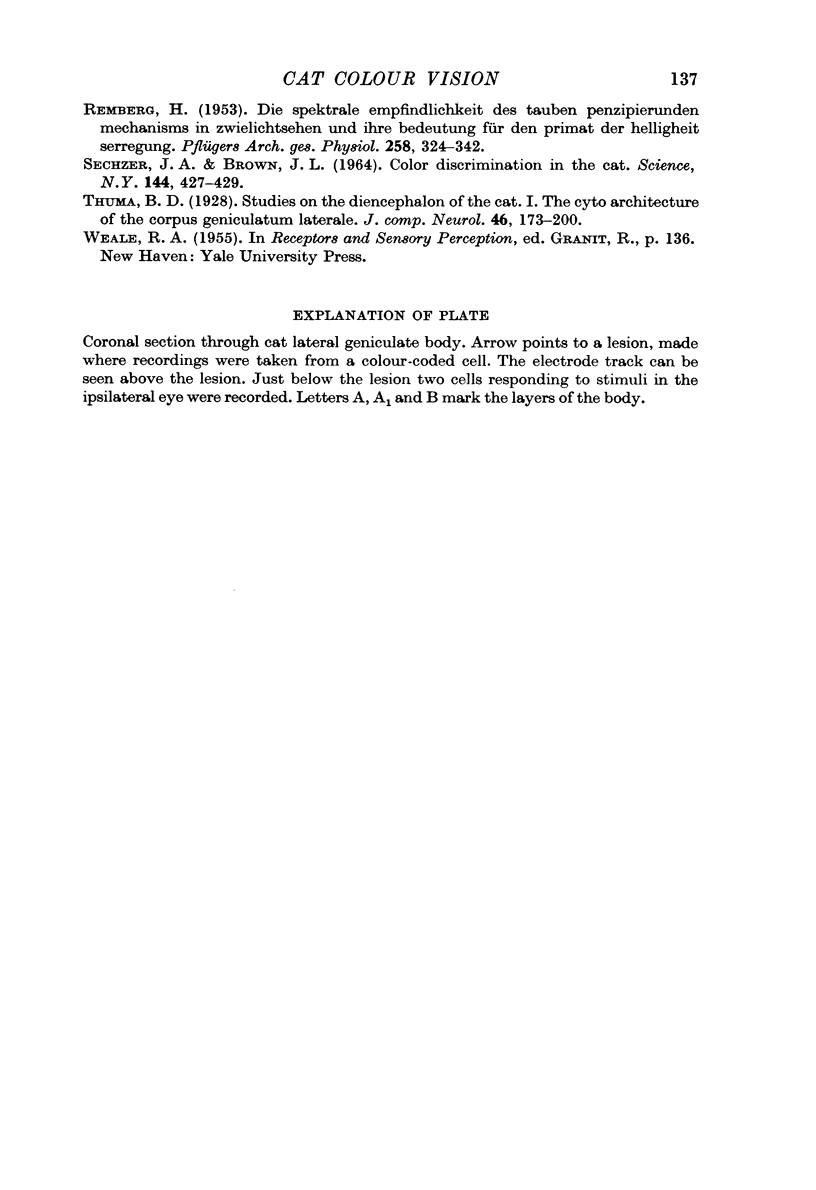
Images in this article
Selected References
These references are in PubMed. This may not be the complete list of references from this article.
- CLARK W. E. L. The laminar pattern of the lateral geniculate nucleus considered in relation to colour vision. Doc Ophthalmol. 1949;3:57–64. doi: 10.1007/BF00162598. [DOI] [PubMed] [Google Scholar]
- Daw N. W. Colour-coded ganglion cells in the goldfish retina: extension of their receptive fields by means of new stimuli. J Physiol. 1968 Aug;197(3):567–592. doi: 10.1113/jphysiol.1968.sp008575. [DOI] [PMC free article] [PubMed] [Google Scholar]
- Daw N. W., Pearlman A. L. Cat colour vision: one cone process or several? J Physiol. 1969 May;201(3):745–764. doi: 10.1113/jphysiol.1969.sp008785. [DOI] [PMC free article] [PubMed] [Google Scholar]
- Dews P. B., Wiesel T. N. Consequences of monocular deprivation on visual behaviour in kittens. J Physiol. 1970 Feb;206(2):437–455. doi: 10.1113/jphysiol.1970.sp009023. [DOI] [PMC free article] [PubMed] [Google Scholar]
- GUNTER R. The discrimination between lights of different wave lengths in the cat. J Comp Physiol Psychol. 1954 Apr;47(2):169–172. doi: 10.1037/h0061325. [DOI] [PubMed] [Google Scholar]
- Granit R., Tansley K. Rods, cones and the localization of pre-excitatory inhibition in the mammalian retina. J Physiol. 1948 Jan 1;107(1):54–66. doi: 10.1113/jphysiol.1948.sp004249. [DOI] [PMC free article] [PubMed] [Google Scholar]
- Guillery RW THE LAMINAR D. a new interpretation. J Comp Neurol. 1970 Mar;138(3):339–366. doi: 10.1002/cne.901380307. [DOI] [PubMed] [Google Scholar]
- HUBEL D. H., WIESEL T. N. Integrative action in the cat's lateral geniculate body. J Physiol. 1961 Feb;155:385–398. doi: 10.1113/jphysiol.1961.sp006635. [DOI] [PMC free article] [PubMed] [Google Scholar]
- Hubel D. H., Wiesel T. N. Receptive fields and functional architecture of monkey striate cortex. J Physiol. 1968 Mar;195(1):215–243. doi: 10.1113/jphysiol.1968.sp008455. [DOI] [PMC free article] [PubMed] [Google Scholar]
- MEYER D. R., MILES R. C., RATOOSH P. Absence of color vision in cat. J Neurophysiol. 1954 May;17(3):289–294. doi: 10.1152/jn.1954.17.3.289. [DOI] [PubMed] [Google Scholar]
- Pearlman A. L., Daw N. W. Opponent color cells in the cat lateral geniculate nucleus. Science. 1970 Jan 2;167(3914):84–86. doi: 10.1126/science.167.3914.84. [DOI] [PubMed] [Google Scholar]
- REMBERG H. Die spektrale Empfindlichkeit des farbenperzipierenden Mechanismus im Zwielichtsehen und ihre Bedeutung für den Primat der Helligkeitserregung. Pflugers Arch. 1954;258(4):324–342. doi: 10.1007/BF00363641. [DOI] [PubMed] [Google Scholar]
- SECHZER J. A., BROWN J. L. COLOR DISCRIMINATION IN THE CAT. Science. 1964 Apr 24;144(3617):427–429. doi: 10.1126/science.144.3617.427. [DOI] [PubMed] [Google Scholar]



